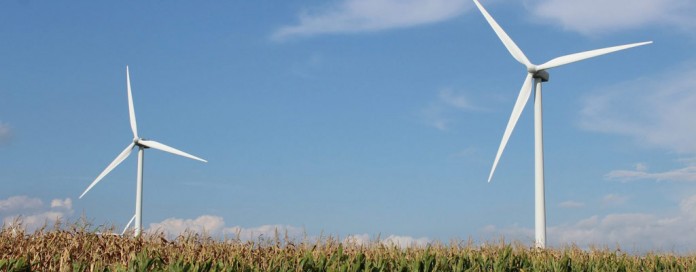Hello again!
Cold winds have swirled outside my office window this week carrying with it the snow, leaving drifts in some places and laying bare the ground in others.
Wind has been with us from the beginning of time, “and the wind from God swept across the face of the waters,” as we read in Genesis. Wind has filled the sails of discovery as men took to the seas and ground the grain to feed the masses using windmills first documented in Persia, around 500-900 A.D.
The development of wind power would seem to be a no-brainer, as it would seem we have an inexhaustible supply and indeed we have seen wind farms pop up across the country. Wind turbines make an impressive sight when we first see them on the horizon and even more so when we get close to them.
Wind energy
If we could harness this energy in an efficient, effective and consistent manner, we could reduce our dependence on fossil fuels significantly.
With the discovery and production of shale gas, we might think our energy future is secure, but there is still a place for wind technology in our future. This brings me to American biophysicist, professor of aeronautics and bioengineering, and dean at the California Institute of Technology, John O Dabiri.
Dabiri was born in Toledo, Ohio, in 1980 to Nigerian immigrants. His father was a mechanical engineer who taught math at a community college. His mother, a computer scientist, raised three children and started a software development company. It was his father doing engineering work on the side that encouraged and inspired young John’s love of engineering.
Road to education
John graduated first in his class in high school and was accepted by Princeton, the only university he had applied to. The summer after his junior year he accepted a summer undergraduate research Fellowship (SURF) in aeronautics at Caltech.
Dabiri returned to Caltech for graduate school after graduating from Princeton with a BSR summa cum laude. He was finalist for both the Rhodes Scholar and the Marshall Scholarship.
He has been awarded NFS research grants eight times in five different fields. He is currently a highly regarded professor at Stanford University. He is best known for his research of the hydrodynamics of jellyfish propulsion and the design of a vertical axis wind farm adapted from schooling fish. Yes, I said schooling fish.
Noting that there is constructive interference in the hydrodynamic wakes of schooling fish, Dabiri suggested that extracting energy from flow vortices could aid more than locomotion. His models of the energy extraction mechanism are applicable to the design and evaluation of unsteady aero and hydrodynamic energy conversion systems like wind farms.
His design of an array of vertical axis turbines led to about an order of magnitude increase in power output per area. Dabiri partnered with Windspire Energy for use of three of 24 turbines that stand approximately 30 feet tall and 4 feet wide.
Innovative discoveries
He started a company, Scalable Wind Solutions, to commercialize the software used to optimally place the wind turbines. This has also led to the U.S. Navy funding development of an underwater craft that propels on these concepts, using up to 30 percent less energy than before.
These vertical axis turbines reduce the footprint of the area needed to for construction allowing multiple turbines on the same area that would be required for a single horizontal wind turbine.
Increasing efficiency in power output as well as the amount of land required is a major step forward in the use and development of wind energy. As we continue to look for more practical applications of wind and solar energy we can be sure that John O Dabiri will be at the forefront of this research for many years to come.
Upcoming dates
On the FSA side of things we remind producers that March 15 is the deadline for 2016 NAP coverage on forage sorghum, oats, potatoes, soybeans, sunflowers and all spring planted specialty crops grown for food. USDA has also put another finance tool in its toolkit with the expansion of the Microloan program. FSA has begun offering farm ownership microloans, creating a new financing avenue for farmers to buy and improve property.
These microloans will be especially helpful to beginning or underserved farmers, U.S. veterans looking for a career in farming and those with small and mid-sized farming operations. Microloans provide up to $50,000 to qualified producers and can be issued to the applicant directly from the FSA.
As always, producers interested in applying for NAP coverage or a Microloan should contact their local FSA office for more information or to set up an appointment.
That’s all for now,
FSA Andy













